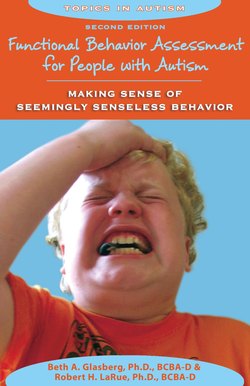Читать книгу Functional Behavior Assessment for People with Autism - Beth Glasberg - Страница 8
На сайте Литреса книга снята с продажи.
Time-Out
ОглавлениеA second intervention for difficult behaviors that has historically been very popular and remains very popular is “time-out” (Ferster, 1958). There are various permutations of time-out procedures, but the most basic element of this intervention is the removal of an individual from the setting where the behavior problem occurred. For example, a student who hits in class may be removed from the classroom for a given period of time. Time-out offers an alternative to more traditional, physical forms of punishment-based discipline, such as spanking, and is firmly entrenched in current parenting culture. Stop any parent at your local playground and ask how long a time-out for a five-year-old should be. They will likely inform you, without a moment’s hesitation, to use one minute for every year of the child’s age. Parents and teachers everywhere have become time-out experts.
Despite time-out’s celebrity, there are problems with relying on it as the solution to every behavior problem. In fact, at times, using time-out actually might encourage a child to engage in a behavior more often. For example, in 1994, Brian Iwata and his colleagues summarized their work with over 150 people with developmental disabilities who were hurting themselves, a classic example of a seemingly senseless behavior. The research revealed that almost 40 percent of the time, self-injury was occurring as a way of getting out of or away from something. Like the boy described above who hit to escape work, these individuals were hurting themselves in an effort to leave a situation. As you might imagine, if a child who engaged in self-injury was sent to time-out, then we would see a cycle in which the child is motivated to escape a situation, hurts herself, and escapes the situation.
More recently, in a sample of thirty-two children seen in an outpatient clinic for varied problem behaviors, a group of researchers (Love et. al, 2009) found that escaping a demand was the second most common motivation for misbehaving. If these children were sent to time out (escape), then we would expect more, rather than less, problem behavior in the future.
Another challenge associated with time-out is that many children require a great deal of intervention to get them to their time-out location. This intervention may take the form of repeated instructions to go to time-out, hand holding while walking to the time-out area, or more involved physical guidance. Each of these strategies is associated with a high level of attention. If a child is engaging in a problem behavior in order to get attention, time-out may actually lead to rewarding the inappropriate behavior.
